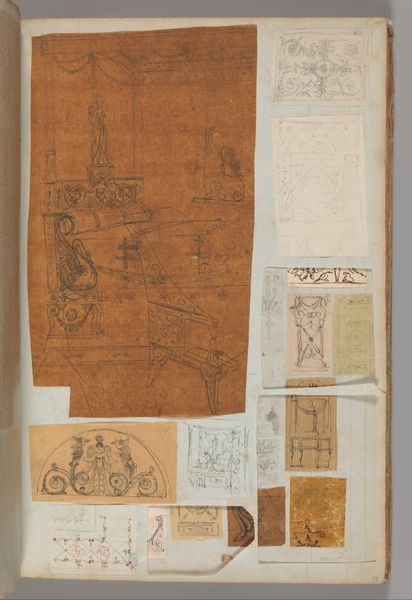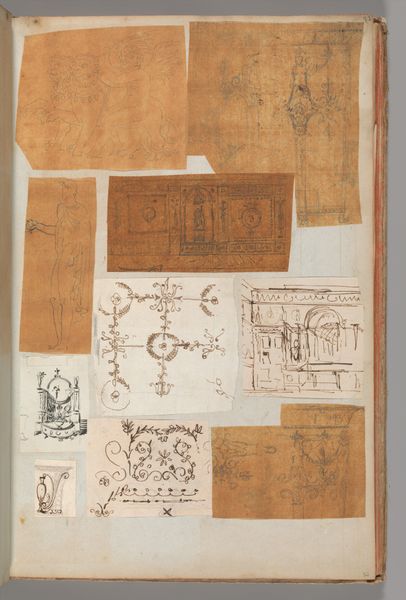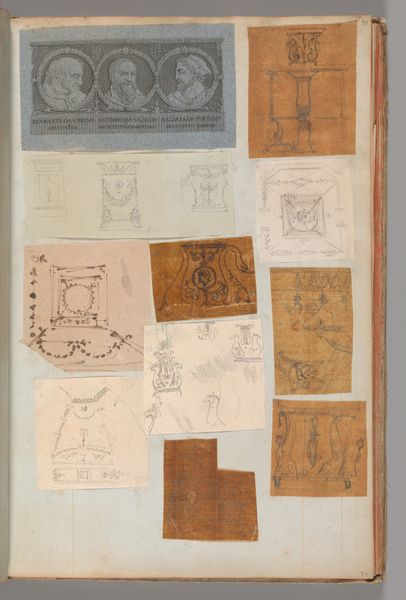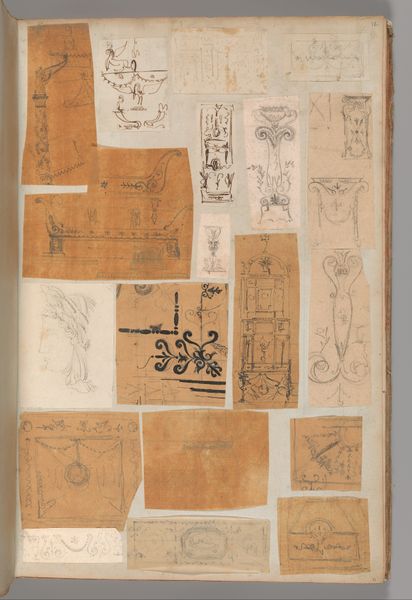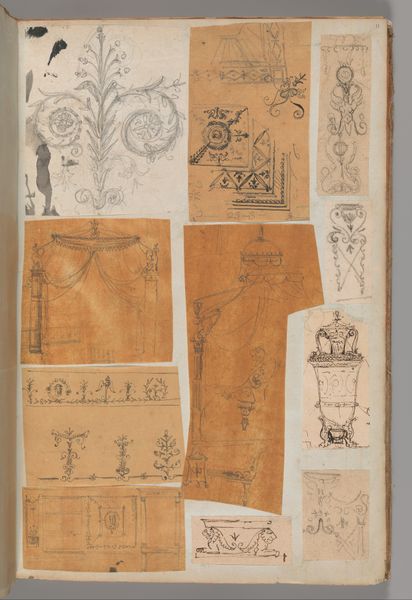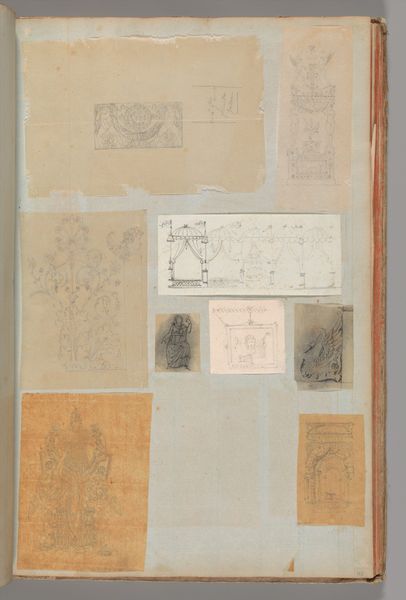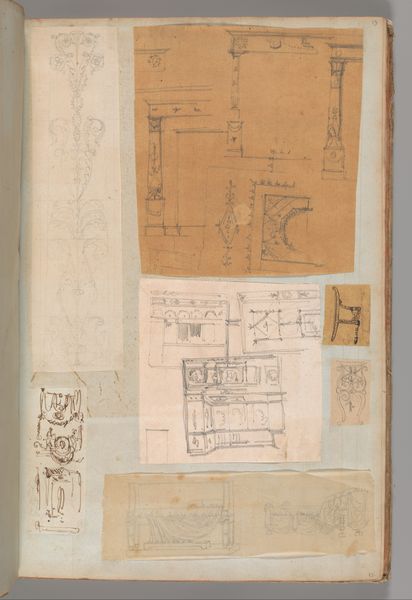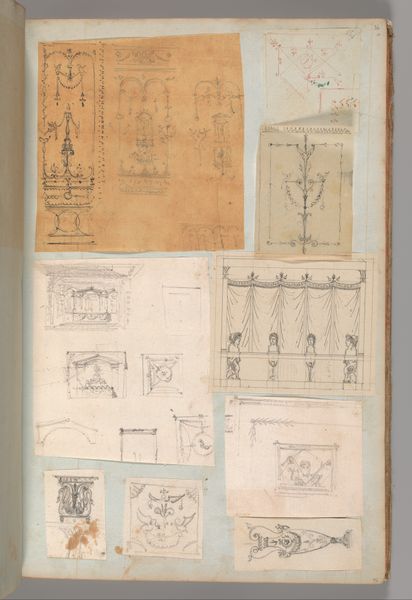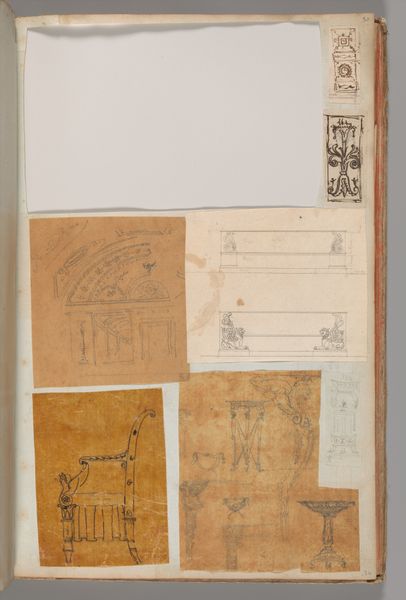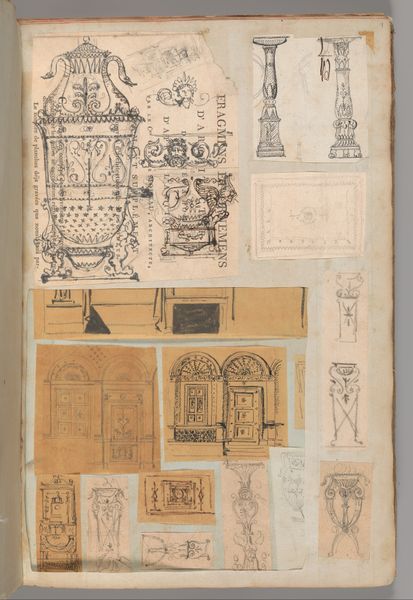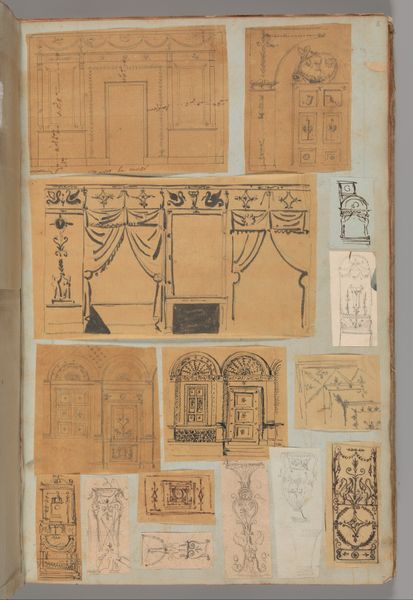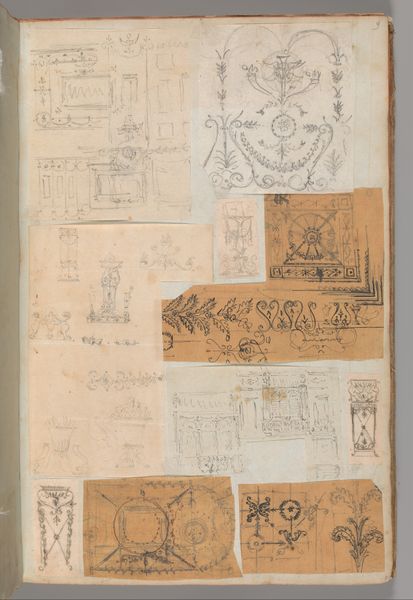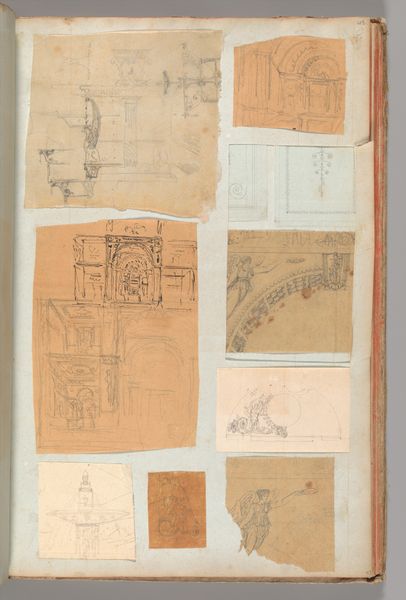
Page from a Scrapbook containing Drawings and Several Prints of Architecture, Interiors, Furniture and Other Objects 1795 - 1805
0:00
0:00
drawing, print, paper, architecture
#
drawing
#
neoclacissism
# print
#
furniture
#
paper
#
geometric
#
line
#
architecture
Dimensions: 15 11/16 x 10 in. (39.8 x 25.4 cm)
Copyright: Public Domain
Curator: This page from a scrapbook is attributed to Charles Percier and dates to the late 18th or early 19th century, around 1795 to 1805. We believe that it's comprised of a series of architectural and furniture designs, combining drawings and prints, all meticulously arranged on paper. It currently resides in the collection of the Metropolitan Museum of Art. Editor: Oh, my, the compositions evoke the feeling of peering into the private sketchbook of a genius! I immediately pick up a vibe of order and beauty striving to spring out from pure chaos. Curator: Indeed, that tension between order and chaos is key here. Consider the precise linework used to delineate the furniture and architectural elements. Note also the repetitive geometric patterns – the circles, rectangles, and delicate swags – they impose a rational structure on what could easily become a jumble of images. Editor: You're so right about the geometric feel and all that detail! But I’m drawn, first and foremost, to the contrast of styles. You’ve got formal elevations alongside what appear to be quick, almost frantic, sketches. It's like a beautiful dance of ideas in nascent form. What sort of cultural narrative do you suppose that captures? Curator: Precisely, this juxtaposition illuminates Percier's creative process, allowing us to follow his thought as it shifts between grand neoclassical design principles and the more intimate, practical considerations of interior space. His commitment to Neoclassicism is plain in the rigid symmetry of the furniture and architectural facades. These showcase the rational approach to aesthetics that characterized the era. Editor: Yes, a style intended for emperors! And yet the seemingly offhand sketches, though adhering to geometry, lend the image a sense of warmth. I imagine his candlelit workshop...the scratching of his pen... it is alive! But what can you share with me about the "prints?" How would you consider those with respect to his spontaneous invention? Curator: Good question. By including prints alongside drawings, Percier engages in a dialogue between different modes of representation. While drawings capture his immediate inspiration, prints serve to document established designs and styles from other artists or historical examples that might have been relevant to him. Editor: Right. So both a gathering of inspiration and the seedbed for an artist’s personal invention. It is really fascinating to see both at once, in a single work! Curator: And so, this album leaf, beyond its immediate visual appeal, stands as a testament to the rigorous training and inventive spirit that animated design during the Neoclassical era. It is so exciting to unpack a life. Editor: Absolutely, the piece creates this intimate window into another era, when folks dreamed and planned and, above all, sought a sense of serenity even in mere line drawings. I find myself breathing more deeply just taking it all in!
Comments
No comments
Be the first to comment and join the conversation on the ultimate creative platform.
